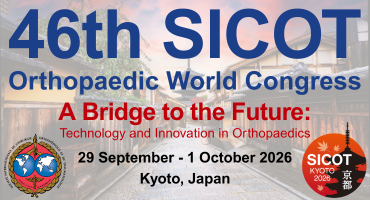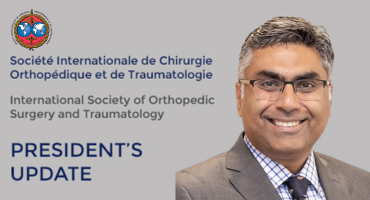 Ali Al-Hamdani
Ali Al-Hamdani
National Representative of Denmark
The Danish Orthopaedic Society (DOS) was established in 1945, and it holds an annual scientific meeting in October every year.
There are 9 subspecialties in our society and they are: hand surgery, paediatric orthopaedics, shoulder and elbow surgery, spine surgery, sports surgery, hip and knee arthroplasty, traumatology, foot and ankle surgery and tumour surgery. The Society has around 1,000 active members, of which around 600 are trained orthopaedic surgeons.
The aims of the Danish Orthopaedic Society are:
- to promote orthopaedic scientific work and collaboration both nationally and internationally.
- to promote education in orthopaedic surgery.
- to promote orthopaedic surgery through collaboration with other medical scientific societies.
- to promote orthopaedic surgical research, education and training by providing financial support based on recommendation of the DOS board.
Education as a specialist in orthopaedic surgery in Denmark:
The specialist training in orthopaedic surgery can commence after the basic medical education and consists of two parts:
- Introduction to orthopaedic surgery (12 months).
- Basic orthopaedic training / Board certification (48 months).
- Followed by up to 3 years of sub-specialization.
Description for the specialist training in orthopaedic surgery:
Orthopaedic surgery is responsible for the prevention, diagnosis and treatment of disorders of the musculoskeletal system of both traumatic and non-traumatic origin by which operative interventions or bandaging is an essential link. The aim is to treat congenital, traumatic, developmental, degenerative, infectious and neoplastic disorders of the musculoskeletal system.
Introduction (12 months):
All introduction positions are advertised and candidates are free to apply for a position within the geographical region that may be of interest to them. The posts are advertised by the individual orthopaedic departments. The purpose of the Introduction post is to expose the candidates to the specialty and to teach them the basic surgical procedures.
Basic orthopaedic training / Board certification (48 months):
The basic orthopaedic training takes 4 years and is organized based on the geographical training region (5 regions). It differs based on the geographic location. As a general rule, the trainee has a main department where the majority of the training takes place. In addition, there are set attachments of varying duration to other orthopaedic departments. Supervised training plans are prepared in collaboration with experienced specialists/ trainers acting as supervisors. The progression in the acquisition of competences will generally allow the candidate/trainee to act as supervised orthopaedic specialists for the last 18-24 months of their basic orthopaedic training.
Subspecialty:
The basic orthopaedic education can be followed by up to 3 years of further subspecialisation in one of the nine subspecialties.
Note: Candidates from the EU (European Union) can also apply for introduction and basic orthopaedic education in Denmark, but a Danish language certificate is needed. Candidates from countries outside EU should also pass a medical equalizing exam.


















Comments
Arthroscopy subspeciality
Comment:
Arthroscopy subspeciality
Comment: